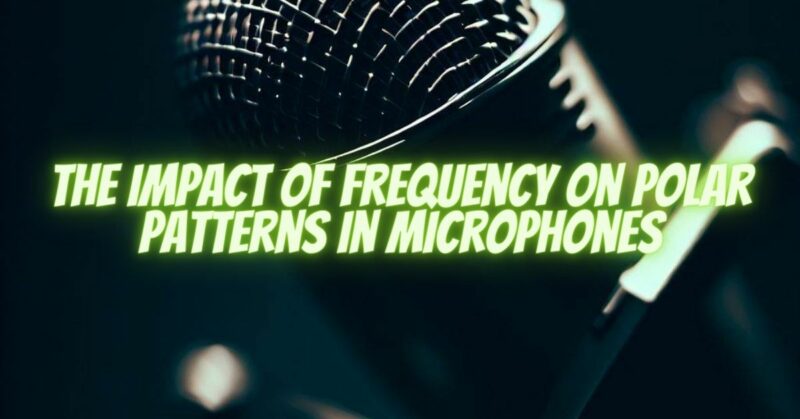Microphones play a vital role in capturing sound, and understanding their polar patterns is essential for achieving desired audio results. Polar patterns determine how a microphone captures sound from different directions, and the frequency response of a microphone can significantly influence its polar pattern characteristics. In this article, we delve into the intricate relationship between frequency and polar patterns in microphones. Join us as we unravel the sonic tapestry and explore how different frequencies shape the directional sensitivity of microphones.
- The Basics of Polar Patterns: Polar patterns describe the directional sensitivity of a microphone. Common polar patterns include omnidirectional, cardioid, supercardioid, and figure-8. Each polar pattern has distinct characteristics, affecting how a microphone picks up sound from different angles.
- Frequency Response and Polar Patterns: The frequency response of a microphone refers to its sensitivity to different frequencies across the audible spectrum. The design and construction of microphones can influence their frequency response, and this, in turn, affects the behavior of polar patterns at different frequencies.
- Directional Consistency Across Frequencies: Some microphones exhibit consistent polar patterns across the entire frequency range. For example, a cardioid microphone may maintain its cardioid pattern regardless of the frequency. This consistency ensures predictable sound capture and facilitates effective audio capture in various recording situations.
- Frequency-Dependent Polar Patterns: Certain microphones exhibit frequency-dependent variations in their polar patterns. This means that the directional sensitivity of the microphone may change at different frequencies. For instance, a microphone may become more omnidirectional at lower frequencies while displaying more directional characteristics at higher frequencies.
- Proximity Effect and Low-Frequency Enhancement: The proximity effect, commonly associated with directional microphones, refers to an increase in bass response when the sound source is closer to the microphone. This effect is more pronounced at lower frequencies and can impact the polar pattern, altering its behavior in the bass range.
- Off-Axis Coloration and High-Frequency Roll-Off: Off-axis coloration refers to changes in frequency response as sound approaches the sides or rear of a directional microphone. High-frequency roll-off is a common characteristic, resulting in reduced sensitivity to high frequencies at extreme off-axis angles. These effects can influence the polar pattern and alter the microphone’s overall sound capture.
- Application Considerations: Understanding the impact of frequency on polar patterns is crucial for microphone selection in different recording scenarios. Certain applications may require microphones with consistent polar patterns across frequencies, while others may benefit from microphones with frequency-dependent polar patterns to achieve desired sound capture.
Conclusion:
The relationship between frequency and polar patterns in microphones unveils a fascinating aspect of sound capture. The frequency response of a microphone significantly influences its polar pattern characteristics, shaping its directional sensitivity at different frequencies. By understanding how different frequencies impact polar patterns, audio professionals and enthusiasts can make informed decisions when selecting microphones for specific recording applications. Whether capturing instruments, vocals, or ambient sounds, recognizing the intricate interplay between frequency and polar patterns allows for precise and intentional sound capture, ultimately elevating the overall audio production experience.


